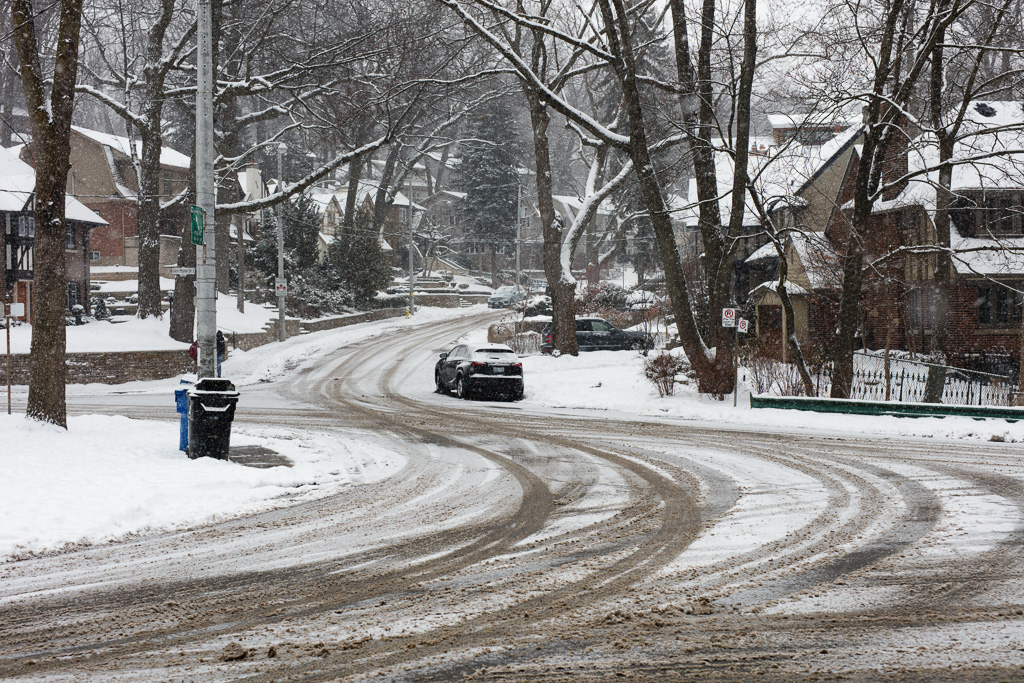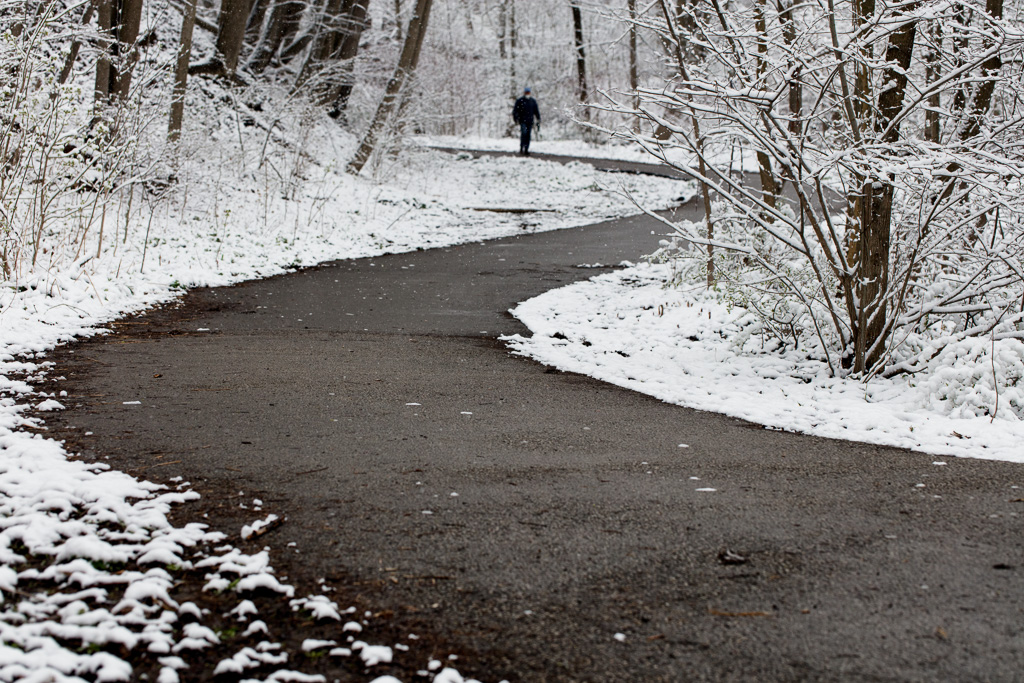The ground is cold, but the asphalt path is still warm. The contrast in temperatures produces a corresponding contrast in the visual field. White remains at the edges of the path while the path reveals itself, snaking its dark line into the distance.
This is an apocalyptic scene. We tend to think of an apocalyptic scene as something dramatic, possibly associated with the end of the world, rivers of blood, lakes of fire, that sort of thing. But here I use the word in its original sense, the way ancient Greeks used it before early medieval religious nuts got their hands on the word and made a mess of it.
In classical Greek, the prefix ἀπό (apo) indicates a movement away from something, hence, its opposite. In this case, ᾰ̓ποκᾰ́λῠψῐς (apocalypsis) denotes the opposite of being covered. In other words, uncovered or revealed. In classical Greek, there was nothing magical or catastrophic about apocalypsis. Presumably, it could refer to something as benign as playing peek-a-boo with a child. Or, in the case of my photograph, the appearance of a path when the snow melts.
For reasons I don’t understand, we’ve never been able to rescue the word from the fanatics who seized it. I wish there was a twelve step program for words that have grown dependent upon religious lunatics to give them a sense of cachet they don’t deserve. What’s wrong with being a modest word with no particular designs on the human imagination? There is a sense in which apocalypsis would reveal far more to us if it had less to do with revelation.
A path curves off to the distance. Nothing is revealed but the path itself. And we need nothing more than that simple curve to give us satisfaction.

